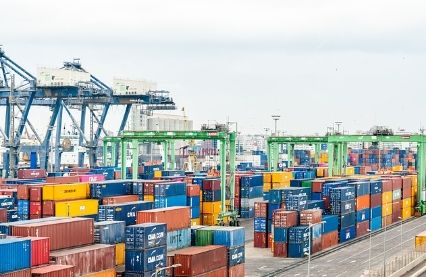What are the export conditions for trade?
What is International Trade Export?
International trade export refers to the process of selling goods or services produced in one country to another country. It plays a vital role in expanding global markets, diversifying products and services, increasing competitiveness, and contributing to economic growth. Export activities involve not only the sale of physical goods across borders but also the provision of services such as banking, consulting, tourism, and software development to clients in other countries. The act of exporting generally implies that the seller in the originating country arranges for goods or services to reach a foreign buyer, adhering to the legal and logistical requirements of both countries involved.

Conditions for International Trade Export
1. Legal Requirements: The exporter must comply with the legal framework of their own country as well as the regulations of the destination country. This includes obtaining necessary export licenses, which vary depending on the product type and the target market. For example, exporting countries often require a business to have a valid export license to sell advanced technology or military goods.
2. Product Standards and Compliance: Goods being exported must meet the quality standards and compliance requirements of the destination country. This might involve specific certifications or tests that prove the products' conformity to foreign standards, such as safety, health, and environmental protections.
3. Market Research and Viability: Successful exporting requires thorough market research. Exporters need to understand the demand, cultural nuances, competition, and economic conditions of the target market. They should also be aware of the local market trends and consumer behavior to tailor their marketing strategies accordingly.
4. Logistics and Supply Chain Management: Efficient logistics are critical for successful exporting. This includes selecting reliable transportation providers, ensuring proper packaging to meet international shipping standards, and managing timely shipments. Additionally, having a robust supply chain management system helps in maintaining the quality and availability of products.
5. Financial Planning and Risk Management: Exporters must be financially prepared to enter international markets. This involves understanding and managing risks associated with currency exchange rates, credit risks, and potential political instabilities in the destination country. Financial tools such as trade finance, insurance, and hedging should be considered to protect against these risks.
6. Documentation and Procedures: Proper documentation is critical in international trade. Export documentation might include commercial invoices, bills of lading, insurance certificates, and export compliance forms. Each document must be accurately filled out and compliant with international trade laws to ensure smooth customs clearance.
Key Considerations in International Trade Export
1. Cultural Sensitivity and Local Customs: Understanding cultural differences and local customs is essential for building successful business relationships. This might involve modifying product designs or marketing approaches to better suit local tastes and preferences.
2. Regulatory Changes: Exporters need to stay updated on any regulatory changes both in their home country and the destination country. Regulatory environments can change, impacting tariff structures, trade agreements, and compliance requirements.
3. Intellectual Property Protection: In many cases, exporting to foreign markets involves risks related to intellectual property theft or misuse. It’s important to secure intellectual property rights in both the home and destination countries.
4. Building Relationships: Developing strong relationships with local distributors, agents, and customers can significantly enhance export success. Trust and reliability are key factors in fostering long-term business relationships.
5. Continuous Monitoring and Feedback: Continuous monitoring of the export process and gathering feedback from foreign clients help in making necessary adjustments in product offerings and business strategies.
Understanding and addressing these conditions and considerations can significantly influence the success of an international trade export strategy, paving the way for sustainable growth and expansion in global markets.
Related articles

 WeChat of CBiBank
WeChat of CBiBank